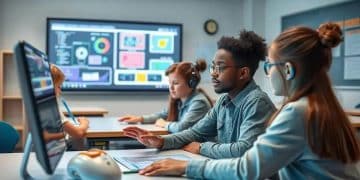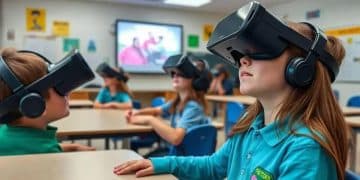Virtual lab simulations trends: reshaping education
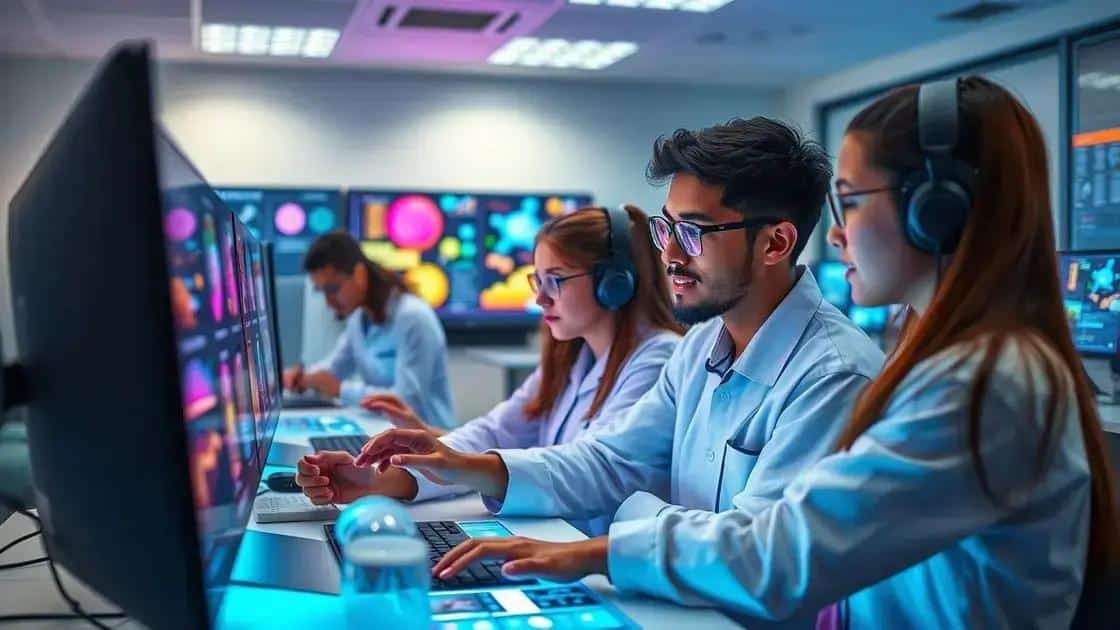
Virtual lab simulations enhance education by providing interactive, immersive experiences that allow students to conduct experiments safely, using advanced technologies like AI, AR, and VR for personalized learning.
Virtual lab simulations trends are changing the educational landscape, offering students immersive experiences that enhance learning. Have you ever wondered how these simulations could impact your studies?
Understanding virtual lab simulations
Understanding virtual lab simulations is essential in grasping their impact on modern education. These simulations provide a safe space for students to explore and experiment without the risks associated with real labs. They allow learners to engage with complex scientific concepts in a way that is both interactive and rewarding.
With the advancement of technology, virtual labs have become more sophisticated. They can mimic real-life scenarios and provide instant feedback, offering students valuable learning experiences. This innovation is not just a trend; it’s reshaping how educators teach and how students learn.
Key Features of Virtual Lab Simulations
To appreciate the value of virtual lab simulations, it’s important to understand their key features:
- Interactivity: Students actively participate in experiments, enhancing engagement.
- Accessibility: Learners can access labs anytime and anywhere, breaking geographical barriers.
- Safety: Students can conduct experiments without the risks of physical harm or costly materials.
The effectiveness of these simulations also lies in their ability to provide real-time data. Students can see the immediate results of their actions, which reinforces learning. They can repeat experiments as often as needed, exploring different outcomes without the limitations of time or resources found in traditional labs.
Benefits to Science Education
The integration of virtual lab simulations into science education offers numerous benefits. They help in visualizing complex processes, making it easier for students to understand abstract concepts. Moreover, collaborative tools within these simulations enable students to work together, fostering teamwork and communication skills.
By utilizing these tools, educators can assess student performance through detailed analytics provided by the simulation platforms. This data can inform teaching strategies and help identify areas where students may need additional support.
Ultimately, the role of virtual lab simulations in education is becoming increasingly crucial. They provide innovative solutions for teaching science, preparing students for future careers in STEM fields, and promoting lifelong learning.
Benefits of virtual lab simulations in education
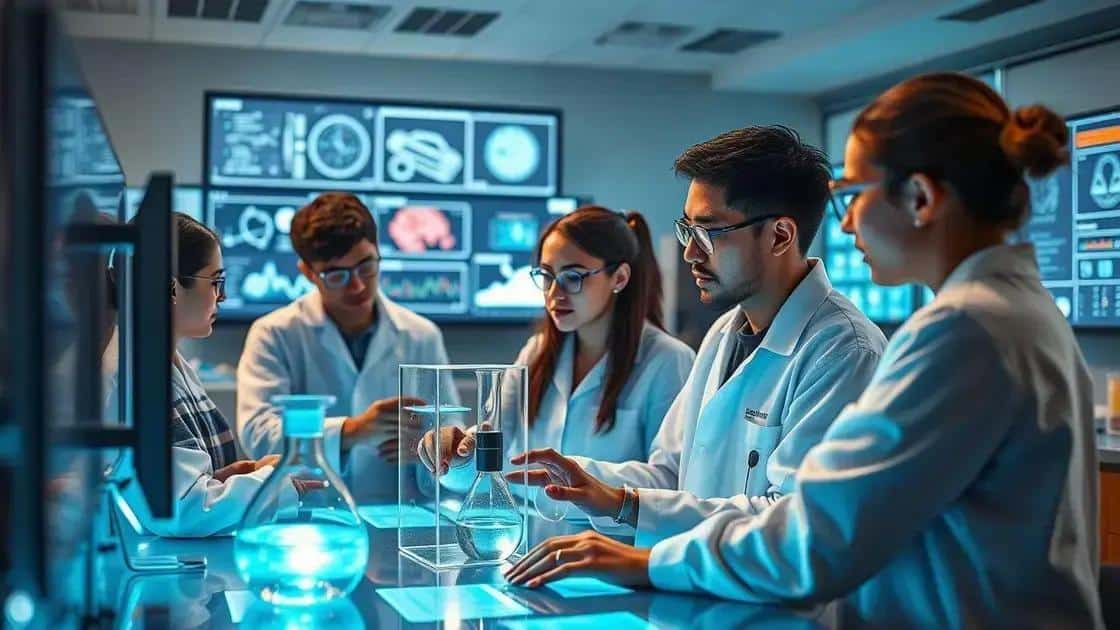
Benefits of virtual lab simulations in education are numerous, making them a valuable tool for modern classrooms. These simulations allow students to engage in hands-on experiments without the limitations of traditional laboratories.
One major advantage is that they promote active learning. When students interact with virtual labs, they take on a more significant role in their education. This participation boosts understanding and retention of complex concepts.
Enhanced Learning Experiences
Virtual labs create immersive learning environments. Students can visualize and manipulate elements in ways that would be impossible in a real lab.
- Flexibility: Learners can access materials anytime and anywhere, which supports diverse learning styles.
- Cost-Effectiveness: Schools can save on materials and equipment, reducing the financial burden of lab experiments.
- Immediate Feedback: Students receive instant responses during simulations, allowing them to correct mistakes and understand concepts in real-time.
Additionally, these simulations foster collaboration among students. They can work together on experiments, sharing insights and developing teamwork skills. Virtual environments often include collaborative tools, making it easy for peers to communicate and learn from one another.
Accessibility for All Students
Another important benefit of virtual lab simulations is their ability to provide equal access to all students. This inclusivity is vital in education, ensuring that everyone has the opportunity to engage with science.
Students with disabilities or those who may struggle in traditional lab settings find virtual simulations more accommodating. They can learn at their own pace and revisit experiments as often as needed, building confidence along the way.
Ultimately, the benefits of virtual lab simulations extend beyond just convenience; they enrich the educational experience, preparing students for future challenges in STEM fields.
Challenges in implementing virtual lab simulations
Challenges in implementing virtual lab simulations are important to consider as educators embrace this technology. While there are many benefits, obstacles can hinder their effectiveness in classrooms.
One major challenge is the cost of technology. Schools may need to invest in high-quality software and hardware to run these simulations effectively. This financial burden can be a barrier, especially for underfunded institutions.
Technical Issues
Another significant hurdle is related to technical skills. Not all educators feel comfortable using advanced technology. Some may require training to fully utilize virtual labs, which can demand additional time and resources. Ensuring that teachers have the necessary skills is critical for successful implementation.
- Software Compatibility: Not all software may work with existing school systems, leading to potential disruptions.
- Internet Access: Reliable internet is essential for virtual labs, and students without access may face challenges.
- Device Availability: Students need appropriate devices, which may not be accessible to everyone.
In addition to technical difficulties, there can also be concerns regarding student engagement. Some learners may find virtual labs less stimulating than traditional hands-on experiments. Addressing engagement issues is essential for maximizing the benefits of these simulations.
Integration into Curriculum
Successfully integrating virtual lab simulations into existing curricula can also be challenging. Teachers must align these tools with educational goals and standards. If they do not fit seamlessly into lesson plans, their usefulness may be diminished.
Moreover, collaboration among educators is vital. Schools need to foster environments where teachers can share experiences, tips, and strategies for using virtual labs more effectively. Without this collaboration, many of the advantages of virtual labs may go untapped.
By recognizing and addressing these challenges, schools can better prepare for the successful adoption of virtual lab simulations.
Future trends in virtual lab simulations
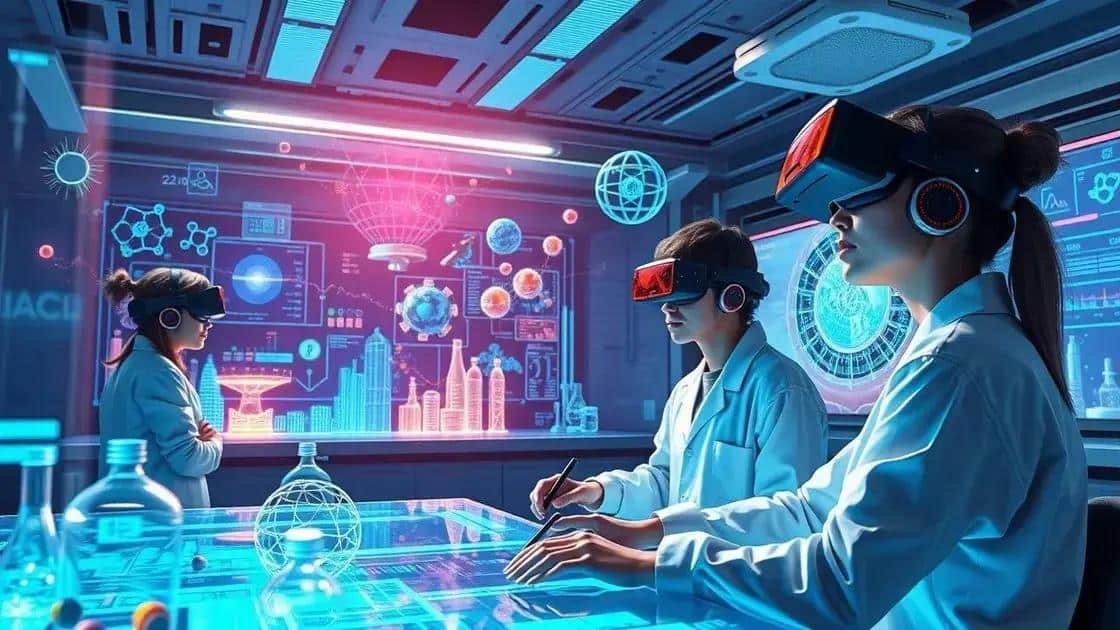
Future trends in virtual lab simulations promise to revolutionize the way we approach education and scientific experimentation. As technology continues to evolve, virtual labs will provide even more immersive and interactive experiences for students.
One key trend is the increased use of artificial intelligence in virtual labs. AI can personalize learning experiences, adapting simulations to meet the needs and skills of individual students. This tailored approach will help learners grasp complex concepts more effectively.
Augmented and Virtual Reality
An exciting advancement is the integration of augmented reality (AR) and virtual reality (VR)
Another trend is the growing emphasis on data analysis within virtual labs. Students will learn to interpret real-time data, developing critical thinking and problem-solving skills. As they analyze outcomes from experiments, they will become more adept at drawing conclusions based on evidence. In addition, virtual labs will increasingly integrate with other online resources and educational platforms. These connections will offer students access to a broader range of scientific tools and information, enriching their learning journey. For instance, interactive tutorials and online lectures may be connected directly to virtual labs, allowing students to learn new concepts just before applying them in simulations. This cohesive learning experience can enhance the educational impact of virtual labs. Overall, the future of virtual lab simulations looks promising. With advancements in technology, students will enjoy more engaging, personalized, and comprehensive learning experiences in science. Virtual lab simulations are interactive digital platforms that allow students to conduct experiments and learn scientific concepts in a safe environment. They provide immersive experiences that make learning more interactive and enjoyable, thereby encouraging students to actively participate in their education. Emerging technologies like artificial intelligence, augmented reality, and virtual reality are increasingly used to create more engaging and personalized learning experiences. Yes, virtual lab simulations offer equal access to all students, allowing them to learn at their own pace and providing accommodations for diverse learning needs.
Integration with Online Resources
FAQ – Frequently Asked Questions about Virtual Lab Simulations
What are virtual lab simulations?
How do virtual labs enhance student engagement?
What technologies are used in virtual lab simulations?
Are virtual labs accessible for all students?


